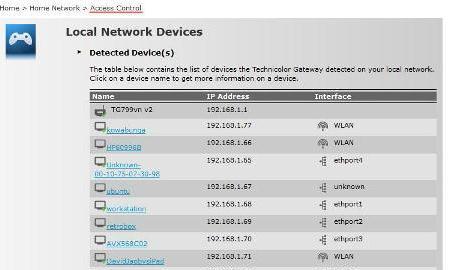How I Hacked My Home, IoT StyleHow I Hacked My Home, IoT Style
It didn’t take long to find a score of vulnerabilities in my home entertainment, gaming, and network storage systems.

Very often new terms get over-hyped in the IT security industry. Today, as we all look to find out more about the Internet of Things, the typical residence can easily have five devices connected to a home network that aren't computers, tablets, or cellphones. As users in this connected environment, we need to ask ourselves "What's the current threat level?" and "How vulnerable am I?"
Most people know what a computer virus is, that we should have strong passwords, and that it's important to install the latest security patches. But many of us (even those with an IT-security mindset) still focus primarily on protecting our traditional endpoints and forget that there are other devices connected to our networks.
For this reason, I decided to conduct research that would identify how easy it would be to hack my own home. Are the devices connected to my network vulnerable? What could an attacker actually do if these devices were compromised? Is my home hackable? I determined to look for real, practical, and relevant attack vectors to see whether it was.
During my research I focused on all the "other" devices I have connected to my home network: a smart TV, satellite receiver, DVD/Blu-ray player, network storage devices, and gaming consoles. Before I started, I was pretty sure that my home was pretty secure. I mean, I've been working in the security industry for over 15 years, and I'm quite paranoid when it comes to such things as security patches.
As I started my research, it didn’t take long to figure out just how easy it was to find vulnerabilities in all of the systems. I managed to find 14 vulnerabilities in the network attached storage, one vulnerability in the Smart TV, and several potentially hidden remote control functions in the router.
The most severe vulnerabilities were found in the network-attached storage, several that would allow an attacker to remotely execute system commands with the highest administrative privileges. The tested devices also had weak default passwords; lots of configuration files had the wrong permissions; and they also contained passwords in plain text.
When I investigated the security level of the smart TV I discovered that no encryption was used in communication between the TV and the TV vendor’s servers. I was able to replace an icon of the Smart TV graphic interface with a picture, showing the potential for a man-in-the-middle style of attack.
The DSL router used to provide wireless Internet access for all other home devices contained several hidden dangerous features that could potentially provide the Internet service provider remote access to any device in my private network. The results were shocking, to say the least.
What I found from my research is that we need to assume that our devices can be, or are already, compromised by attackers who can gain access to them. This applies to consumers as well as companies. We need to understand that everything we connect to the network might be a stepping stone for an attacker.
We also need to understand that our information is not secure just because we have a strong password or are running some protection against malicious code. It took me less than 20 minutes to find and verify extremely serious vulnerabilities in a device considered to be secure.
As a community, we need to come up with alternative solutions that can help individuals and companies improve their security. Even though the home entertainment industry might not be focused on security, with just a few simple tips we can all raise the security level a little bit higher. As a side note, all vulnerabilities have been reported to the respective vendors, and they're working on solutions for these products.
Click here for more details on David’s research.
About the Author
You May Also Like
Uncovering Threats to Your Mainframe & How to Keep Host Access Secure
Feb 13, 2025Securing the Remote Workforce
Feb 20, 2025Emerging Technologies and Their Impact on CISO Strategies
Feb 25, 2025How CISOs Navigate the Regulatory and Compliance Maze
Feb 26, 2025Where Does Outsourcing Make Sense for Your Organization?
Feb 27, 2025




